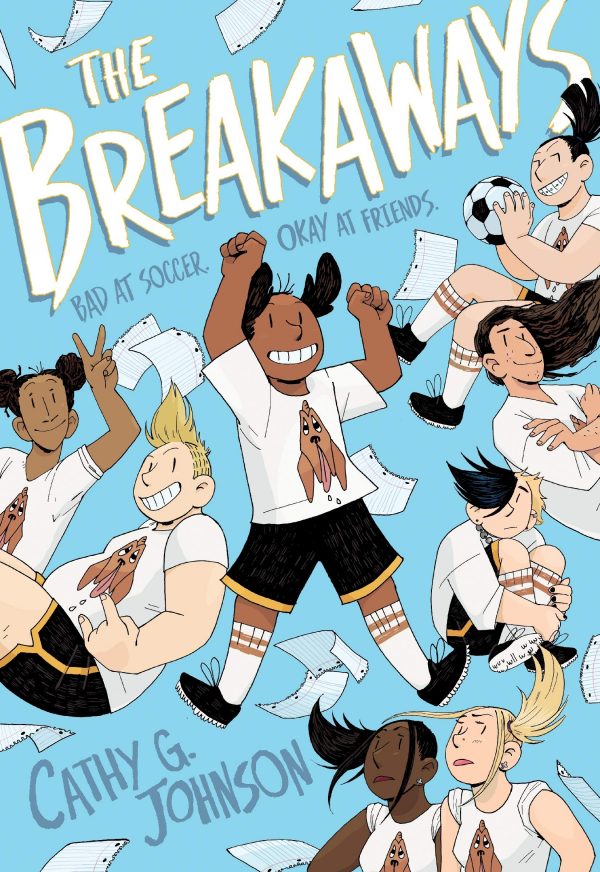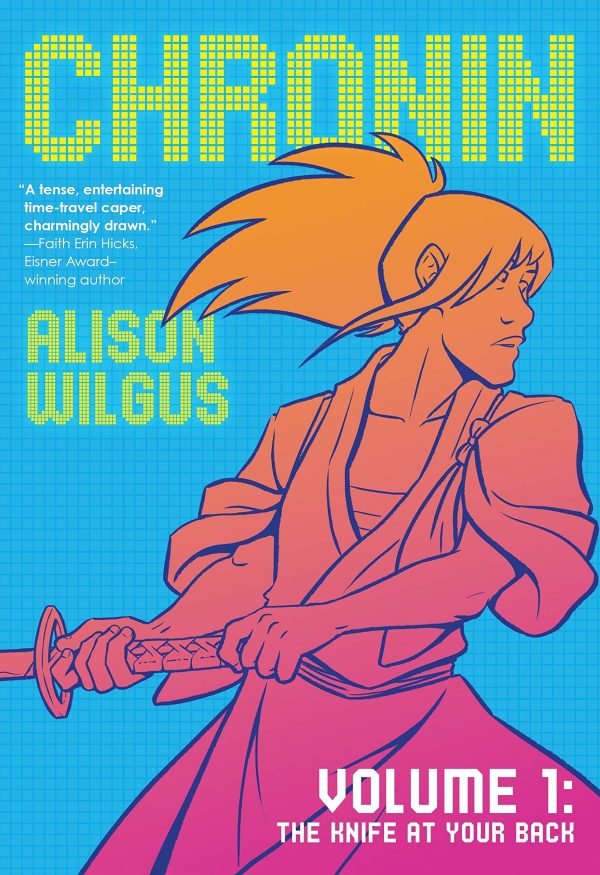The Breakaways
by Cathy G Johnson
Colors by Kevin Czap
FirstSecond Books
Johnson’s previous work has consisted of insightful drama and she brings these skills to The Breakaways, her first book for younger readers, which focuses on a hapless middle school girls’ soccer team. It’s not about soccer so much as the members themselves. In many ways, the team is a conceit that brings different people together, and Johnson treats all of them — whether it’s the dork kid or the bad kid or the bully kid or the popular kid or the weird kid or whatever kid it would be in whatever school trope — with respect and compassion as she digs deeper than their surface tensions.
At the center of the story is Faith, the kind of awkward kid who often ends up being the focus in these things, but the world opens up when she befriends Sodacan and Marie, two so-called “trouble” kids who operate on the fringes of the team, spending more time loafing and sneering than practicing. This allows the other characters to cascade in and out and lets Johnson work her narrative way through several of their lives to reveal the emotional diversity in such confluences and the commonality in all types — the need to be liked and appreciated.
There are some queer threads that run through the story that Johnson handles with an honestly sweet innocence as many of these kids are just figuring themselves out and this is one aspect. It’s the sort of inclusion in fictional works that not only gives helpful and needed representation, but also holds offers helpful and necessary empathy as the world opens up.
By the end, the soccer team is revealed for what it is, but not before capitalizing on the natural “working together as a team” trope that comes with it. What working together actually ends up meaning, though, is entirely refreshing in Johnson’s hands, and brings everything together in such a sweet way. This is a superior book to buy for your favorite younger reader.
Chronin Volume 1: The Knife at Your Back
by Alison Wilgus
Tor Books
Set in 19th Century Japan set on the cusp of a revolution, teahouse server Hatsu takes an interest in mopey, silent samurai Yoshida, who has been making deliveries for the tea house. Noting it’s a curious work choice for a samurai to indulge in, Hatsu asks him to be her bodyguard on the road as she makes a business trip. He eventually agrees, but while on the road, Yoshida’s ignorance of the most basic Japanese customs leads Hatsu to believe he is not who he says he is.
What follows are unexpected revelations that reframe the story by offering additional vantage points to enter the events portrayed. What’s central, though, is the questioning of how we look at the past, sometimes through a romantic frame, sometimes through a revisionist one. It reiterates the idea that history is something that can be interpreted rather than exist etched in stone, and historians bring bias to their studies.
Wilgus executes the story in a skillful Manga art style and energy in unfolding the drama that works well together in presenting the headier themes, prefacing what is no doubt going to be an exciting Volume 2.








